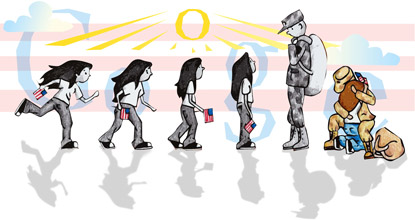Calculator
fun.
Calculators are no substitution for knowing your facts, but
sometimes they can be used to make some fun mathematical discoveries.
For grades 1-3
Try multiplying any number by 10. What do you notice? Now try multiplying by 100. Now 1000.
Think you could do it without a calculator now?
Grades 4-5
Same as the younger kids, try multiplying any number by 10
then 100 then 1000. Seems pretty simple
doesn’t it. You might not need a
calculator. Before you make up a rule
though, try multiplying a number like 4.7 by 10, then 100 then 1000. Now try 2.587.
Once you feel that you can come up with a rule, try dividing
by 10, then 100, then 1000. Can you
figure a rule out for that?
Grades 6-8
Alright, get out you calculator but also paper and
pencil. I’ve got two tricks you might
find pretty cool.
Start with a two digit number, like 35 and multiply it by
11. When you get the answer write it
down making the middle number a different color. Try this several times. You should start to see a neat pattern
forming making it easy to multiply any two digit number by 11 without a
calculator.
Now check this out.
Take any two digit number ending in 5, like 45. Square it (multiply it by itself.) Write down your answer. Do this again several times. What do you notice? It might take a little while and you may need
to ask your parents for some help, but a real nice pattern is there.








